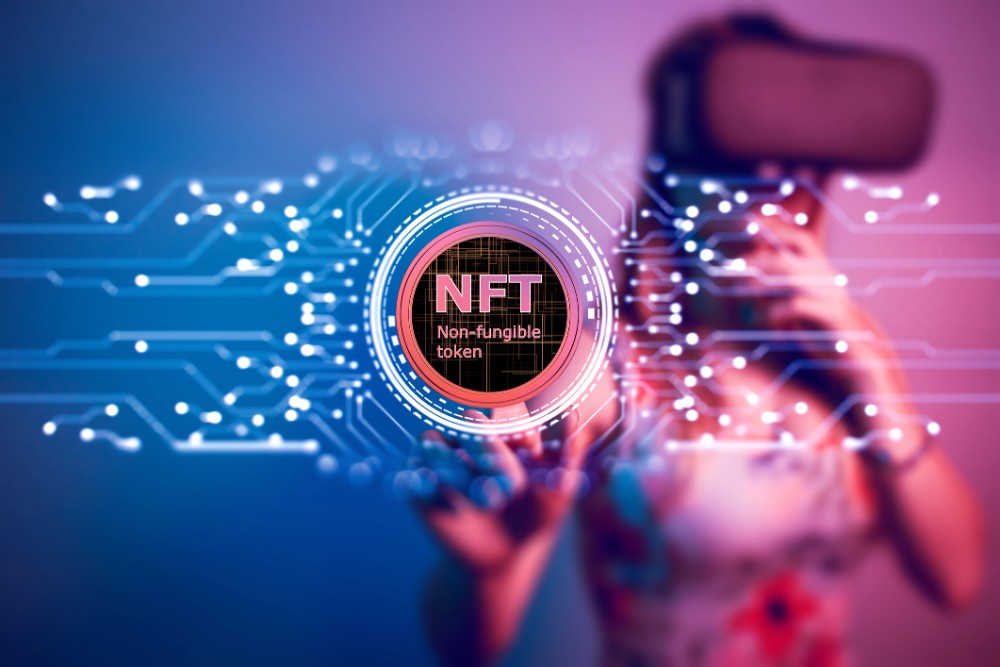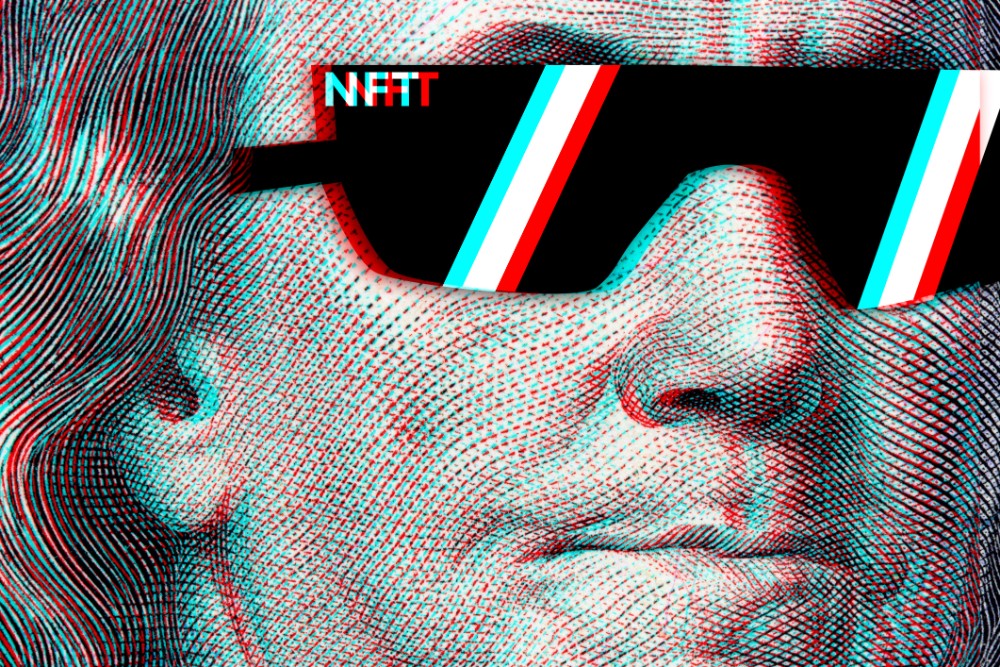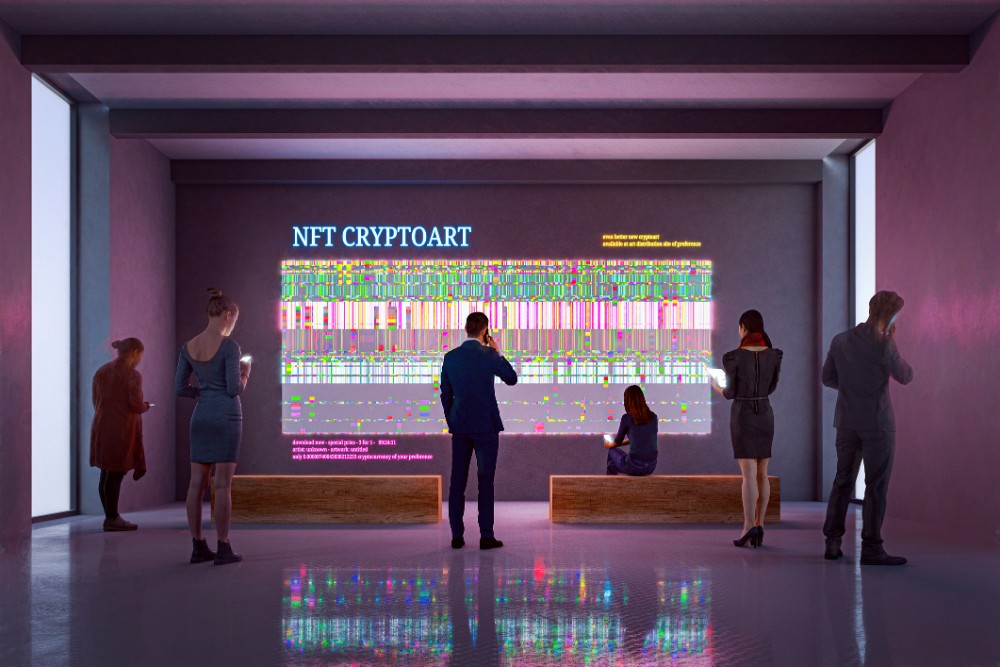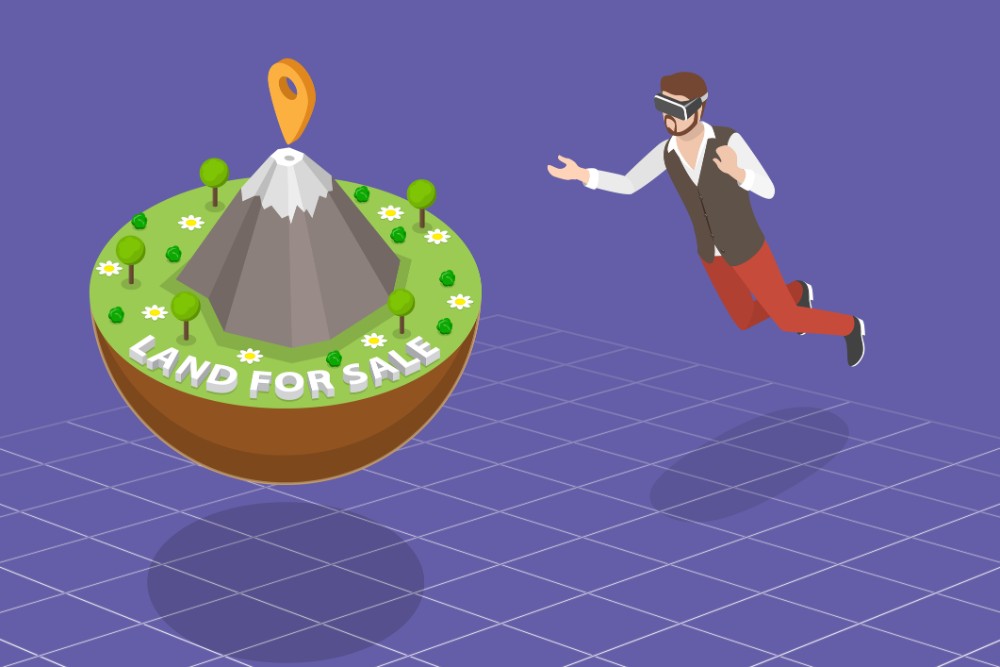
If you’re an investor, it’s hard to miss the surging popularity of NFTs. Celebrities such as Snoop Dogg, Paris Hilton, and Ellen DeGeneres are just a few of the high-profile A-listers who have embraced this platform and are reaching out to audiences via unique digital products. Companies like Adidas and Nike have also joined the fray.
Despite the constant chatter about NFTs, the metaverse, and cryptocurrency, many are still in the dark about what these revolutionary concepts of commerce are all about.
As an investor, it can be a huge mistake and opportunity loss to ignore this growing trend. Read on to learn everything you need to know about NFTs and find out how this may fit in growing your portfolio.
Table of Contents:
What is an NFT?
NFT is short for Non Fungible Token, a term which essentially captures what it is all about. Fungible means interchangeable. Examples of fungible assets would be a $100 bill and 1 bitcoin. Regardless of which $100 bill or 1 bitcoin you receive, it’s worth and functions the same as every other $100 bill or bitcoin.
A Non Fungible Token, on the other hand, is a one-of-a-kind virtual asset that cannot be duplicated. An NFT has its own singular, non-replicable identity. It also has a single owner. While some NFTs, such as digital artworks or music, can be copied, its ownership resides only in one person.
Ownership of an NFT is established via a non-interchangeable set of metadata that’s kept in a blockchain. The metadata acts as the asset’s virtual signature, establishing its uniqueness and authenticity, and setting it apart from other assets.
What is a blockchain?
Understanding blockchains is a crucial part of everything you need to know about NFTs. A blockchain is essentially a virtual public ledger where transactions involving NFTs and cryptocurrency are tracked and stored for life. As the ownership of NFTs change virtual hands through sales or barters, the transactions are captured and “recorded” in blockchains, keeping the authenticity of the original assets intact.
How do you turn an asset into an NFT?
An NFT is minted through a smart contract that’s stored in a blockchain – typically Etherium. The smart contract assigns ownership of the NFT and governs its transferability. An owner may customize the contract and add provisions for better management of their asset, such as royalty payments and linking to other assets.
For a step-by-step tutorial on how to mint an NFT, check out this page.
Everything You Need to Know About NFTs and Cryptocurrency

NFTs and cryptocurrency are closely linked. In fact, the vast majority of NFTs can be purchased using cryptocurrency. As previously mentioned, while both are digital assets, NFTs are one of a kind tokens that represent a singular asset, such as an artwork or a music recording. On the other hand, cryptocurrency is a fungible asset that functions in a highly similar manner to fiat currency, but exists only digitally or virtually.
Cryptocurrency is used as a payment system for a growing number of transactions. Unlike physical money payments, it does not involve banks or other third party institutions. Instead, cryptocurrency coins are exchanged directly between buyers and sellers through blockchains.
You may also exchange cryptocurrency into standard currency through platforms known as crypto exchanges.
How Cryptocurrency Transactions Work
Cryptocurrency can be “mined” – a process which involves complex computer work and a large number of computers. Because of the complexity of the process and the large volume of crypto transactions today, mining is now being done mostly by large companies.
The more common method of owning cryptocurrency is by buying from traditional brokers, most of whom also engage in the buying and selling of traditional financial assets like stocks and bonds.
You can also buy cryptocurrencies from various exchange platforms where other crypto transactions, such as selling and converting crypto into standard currency, are performed. The services and product packages of various cryptocurrency exchanges vary, so you should shop around for the right exchange platform for you.
How to Buy Assets Using Cryptocurrency
You put your cryptocurrencies in a digital wallet, which may be a device or a software where you keep the keys to your cryptocurrencies. The process of paying for a purchase varies depending on the type of digital wallet that you have, but it can be as simple as opening your wallet and clicking on the “send payment” button.
The oldest cryptocurrency is Bitcoin, but newer cryptos are also gaining popularity, including Ethereum, which is the platform and currency commonly used for NFT transactions.
Other popular cryptocurrencies include:
- Litecoin
- Tether
- USD Coin
- Binance Coin
- XRP
Many merchants accept only certain types of crypto, particularly Bitcoin and Ethereum, but others are willing to accept a wide range of cryptocurrencies.
Everything You Need to Know About NFT Applications

There are numerous use cases exploring the practical application of NFTs. Todate, they have made significant inroads in the following areas:
Art
NFTs seem to be finding their niche today in music and the art world – particularly digital art. A physical painting cannot be duplicated (forgeries don’t count as duplications), but digital art can easily be copied by anyone, sometimes with just a simple copy-paste function. By turning an artwork into an NFT in a process called minting, the artist is able to establish the uniqueness of their work. While digital art can still be copied, the copies will not have the signature metadata that authenticates the original.
An artist or digital creator can monetize their NFTs in several ways:
-
They can sell them at auctions or other platforms
Artists and photographers can turn their works into NFTs and sell them for standard currency or cryptocurrency, particularly Etherium. In 2021, digital artist Mike Winkelmann sold an NFT of his work at Christie’s auction house for $69 million. Ferocious, another digital artist, is selling NFTs of his works via Christie’s and Sotheby’s for anywhere from $437,000 to more than $2.8 million. Other marketplaces for art NFTs include Opensea, SuperRare, and Foundation.
-
They can earn passive income from royalties
In minting their work, artists and photographers, as well as musicians and other creators can embed royalties into their NFTs. This means that if an artwork or photograph is resold by a previous buyer, the creator will still be entitled to a certain amount as “royalty”.
-
They can earn passive income from views or listening events
If an artwork is exhibited in a gallery, for example, the artist may use their smart contract to manage compensation for the display of their work.
Music
Music NFTs work in a similar fashion to their art counterparts. A musician can turn their work into an NFT and sell it in digital marketplaces such as Opensea, Super Rare, and Nifty Gateway. Unlike digital artworks where only a single NFT is sold representing a unique artwork, in music, you can sell multiple copies of a single recording that has been converted into an NFT. You can also sell songs by collections.
Brand Marketing
Popular music artists who have gone the NFT route include Snoop Dogg (who also created an NFT music label), Grimes, and DJ Steve Aoki.
Some of the top brands in the world are utilizing NFTs to engage customers in the multiverse platform – a sign of things to come in the realm of marketing.
Strategies employed by these brands include:
-
Special privileges
Owners of a brand’s NTF (sold in NTF marketplaces) get exclusive access to special edition products or events.
-
Metaverse connection
Luxury brands such as Dolce & Gabbana and Ralph Lauren are selling digital apparel that buyers can use for their online avatars and similar online uses. These brands are taking a page off the book of popular digital-only couture brands, such as Republique, XR Couture, and Aurobros.
NBA Top Shot, which sells virtual NBA cards, are selling NTF versions of the cards for digital collectors. These tokens represent animated GIFs of players in action, which collectors can acquire by completing challenges.
Digital platform Bored Ape Yacht Club creates and sells an NTF collection of “bored ape” artworks, which various companies and consumers use for their branding or online avatars. Their collaborative projects have included those with Adidas and Rolling Stone magazine.
-
Combination of physical and digital products
Coca-Cola has launched an NFT package that includes physical and digital products, including digital clothing, a physical Coca-Cola refrigerator, an NFT of a sound card featuring Coke dripping from a fountain, and others.
NFTs and Real Estate

One of the fast growing uses of NFTs is in the realm of real estate. Real estate in the metaverse – also known as virtual real estate – has recently become a buzzword, thanks to recent high profile, multimillion dollar transactions involving a number of A-list celebrities such as Snoop Dogg and Paris Hilton, as well as companies like HSBC, JP Morgan, Samsung, and Adidas.
Real estate in the metaverse may sound like the stuff of science fiction (or superhero movies), but the concept is actually not much different from what most of us know about physical real estate, social media, and internet marketing.
What is virtual real estate?
Virtual real estate is property that exists only on the internet. In metaverse real estate, the earth is divided into pixels, and these pixels define virtual real estate. When you buy an online property, you are essentially buying pixels which you can program to be your very own virtual space.
Just like in the real world, the supply of virtual real estate is limited. And as with physical properties, the prices of online real estate may also vary according to the location. A virtual waterfront property can cost more, as can land with prestigious neighbors. However, since getting from one place to another is as simple as clicking on a spot on the map, proximity to destinations may not count as much in the metaverse as it does in the physical world.
Each virtual land parcel is an NFT, backed by a unique set of metadata that also serves as the deed or proof of the property’s ownership. As the owner, you can resell or lease the property, or build and make improvements on it.
What can you do with your virtual land?
As with anything new, the uses and benefits of virtual real estate have yet to be fully explored and understood. However, several virtual landowners are successfully navigating the multiverse, paving the way for the expected wave of new owners and investors.
Here are a few things you can do with real estate in the metaverse:
-
Develop the land
You can develop your virtual property in any way you want. You can build a digital world where you – as your virtual avatar – can retreat to play games, do some interior designing, or enjoy nearby activities.
You can build homes and buildings for lease, or construct properties that can bring in revenues, such as a digital casino, a gallery of NFT artworks, a clothing store for avatars, a concert venue, and so on.
You can also turn your metaverse real estate into a playground. Digital game makers like Atari and Ultra are collaborating with virtual real estate developers in incorporating gaming into online properties.
Rapper Snoop Dogg, one of the leading proponents of NFTs, has recreated his real life mansion in his virtual property, and charges a fee for a tour of his online realm.
-
Enhance your online presence
Digital space is considered the next frontier in social media. A number of companies are using their virtual properties to engage with clients and customers in a manner that’s more intimate and interactive than in social media platforms like Facebook or Twitter.
As their avatars, audiences can easily gather in one place and participate in a gaming event, watch a concert, visit a museum, join an auction, and so on.
Virtual real estate platform Decentraland has created Fashion Street where digital fashion shows and stores can be hosted. Justin Bieber, Ariana Grande, and other major stars have performed as their avatars in virtual concerts. Paris Hilton hosted a virtual party on her online property.
Luxury real estate broker One Sotheby is combining NFT technology with a real world property sale. They’re representing a physical home currently being constructed in Miami, which is sold along with a replica of the house in the metaverse.
More experiences are being planned and encouraged in the multiverse, such as virtual product launches, virtual meetings, lounge activities, and more.
-
Advertise
You can lease your virtual land to different brands who can put up virtual billboards in the space. This is especially beneficial if you own property in a highly trafficked area, so it’s advisable to choose real estate in the metaverse with care.
How to Buy Virtual Real Estate

Buying real estate in the metaverse is similar to the real world in some ways. You can buy a property directly from a digital real estate platform or work with a real estate agent who can help you find the right property and negotiate the sale.
Today, the vast majority of virtual real estate is owned and sold by four platforms or metaverses – Decentraland, Sandbox, Somnium Space, and Voxels. Each platform offers distinctive features that enhance the quality and attractiveness of the properties they sell.
If you’re interested in buying a virtual property, this is the typical process to follow:
- Review your options and choose the metaverse and the property to buy. Look into the history of the property, if any, and compare prices and features. Consider your real estate goals in making your selection. Do you plan to hold on to the property and wait for the value to increase? Are you looking to resell as soon as the opportunity arises? Are you thinking of expanding your investment through improvements and developments?
- Make sure you have a digital wallet that holds the cryptocurrency to be used in the purchase. Take note that some virtual real estate platform only accepts certain types of cryptocurrency, which may require a specific kind of digital wallet as well.
- Buy the property on the metaverse’s marketplace. Simply go to the site and click buy for your chosen property. Once the sale is confirmed, the NFT will show in your wallet with you as the owner.
Work with a Forward-Thinking Realtor You Can Trust
No doubt, buying and investing in virtual real estate can seem daunting, especially for beginners. To be successful in this endeavor, you need the guidance of a professional who can help you navigate this complex marketplace and provide you with important insights and advice.
Allow me, Juan Rubio, to guide you through your venture in the metaverse. In my more than eight years of experience in real estate, I have made it a point to always be on the cutting edge of the industry and help my clients find the best opportunities – including those that are not easily visible or accessible to the untrained eye.
With the fast growth of the virtual world, I am convinced that the metaverse is here to stay and is the next frontier to conquer for investors and real estate professionals alike. With my knowledge and experience, I can help you with everything you need to know about NFTs and the metaverse, and guide you in taking the bold step forward.
Call me today at 702.913.3044 or send me an email at this address to get started.
